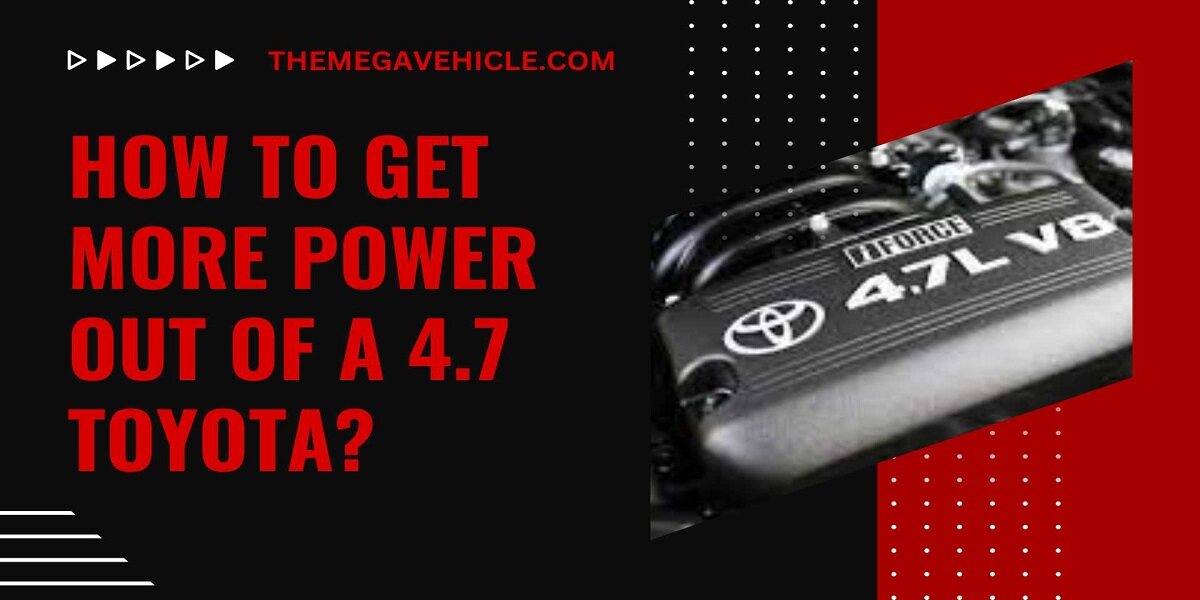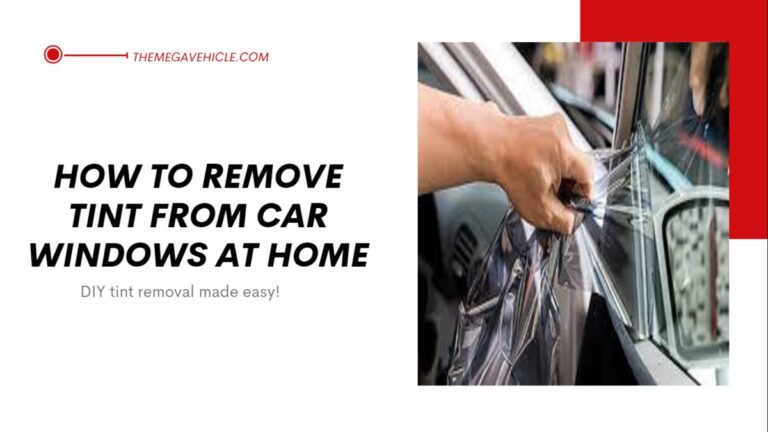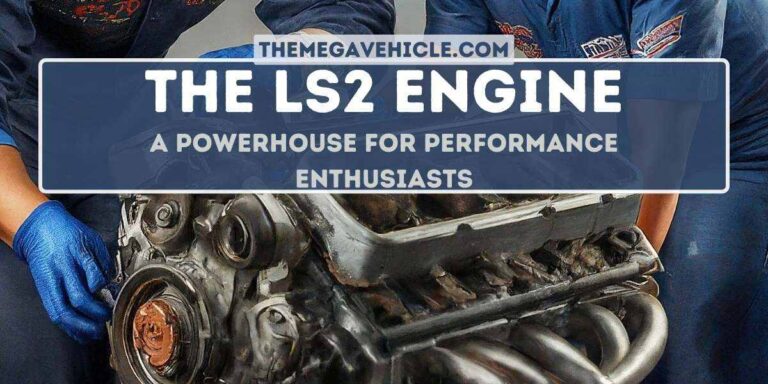How to Get More Power Out of A 4.7 Toyota?

The 4.7L V8 engine is a reliable and durable engine that powers many popular Toyota vehicles, such as the Tundra and Sequoia. However, while it is known for its longevity, the 4.7L can also be modified to produce more power.
If you are looking to boost the performance of your 4.7L Toyota engine, there are a number of modifications you can make. Some of the most common and effective modifications include:
1. Cold Air Intake
A cold air intake system is one of the most popular and effective modifications you can make to your 4.7L Toyota engine. It replaces the stock air intake system with a high-flow intake tube and filter that is often located in a cooler part of the engine bay, such as behind the grille or in the fender. This allows the engine to draw in cooler, denser air.
Cooler air contains more oxygen, which can lead to better combustion and increased power. Cold air intakes are a relatively simple and inexpensive way to improve engine performance, and they can offer a noticeable increase in horsepower and torque.
2. Performance Exhaust System
The stock exhaust system on a 4.7L Toyota engine is relatively restrictive. This means that it can limit the amount of airflow out of the engine, which can reduce performance. A performance exhaust system can help to improve airflow and reduce backpressure, resulting in a modest increase in horsepower and torque.
In addition to improved performance, a performance exhaust system can also give your Toyota a more aggressive sound. This is because performance exhaust systems are typically made with less restrictive mufflers and resonators.
Types of Performance Exhaust Systems
Performance exhaust systems are available in a variety of configurations, including:
- Cat-back systems: Cat-back systems replace the stock exhaust components from the catalytic converter back. This is the most common type of performance exhaust system, and it is a relatively easy and affordable way to improve performance and sound.
- Full exhaust systems: Full exhaust systems replace the entire stock exhaust system, from the headers back. This type of system is more expensive and difficult to install, but it can offer the greatest performance gains.
3. Air Filter Upgrade
The air filter in your 4.7L Toyota engine is responsible for trapping dirt and debris before it enters the engine. Over time, the air filter can become clogged, which can restrict airflow and reduce performance. Upgrading to a high-performance air filter can help to improve airflow and increase power, while still providing excellent filtration.
How a High-Performance Air Filter Works
High-performance air filters are typically made of a synthetic material that is more porous than the stock paper filter. This allows more air to flow through the filter, while still trapping dirt and debris.
By increasing airflow into the engine, a high-performance air filter can help to improve combustion and increase power. In addition, a high-performance air filter can help to improve fuel economy by reducing the amount of fuel that is needed to produce the same amount of power.
4. Throttle Body Upgrade
The throttle body is a critical component in your 4.7L Toyota engine. It is responsible for controlling the amount of air that enters the engine, and it plays a major role in engine performance. By upgrading to a larger throttle body, you can improve airflow and enhance throttle response, resulting in a more responsive and powerful engine.
How a Throttle Body Upgrade Works
The throttle body is located between the air intake and the intake manifold. It is a butterfly valve that controls the amount of air that enters the engine. When you press the accelerator pedal, the throttle body opens to allow more air into the engine.
By increasing the diameter of the throttle body, you can allow more air to flow into the engine. This can lead to improved throttle response, increased horsepower and torque, and better acceleration.
5. Air Intake Manifold Upgrade
The air intake manifold is a critical component in your 4.7L Toyota engine. It is responsible for distributing air from the throttle body to the engine’s cylinders. Upgrading to a performance air intake manifold can improve air distribution and increase power output.
How a Performance Air Intake Manifold Works
Performance air intake manifolds are typically made of a smoother material and have fewer bends than the stock intake manifold. This allows air to flow more freely into the engine’s cylinders.
By improving air distribution, a performance air intake manifold can help to improve combustion and increase power output. In addition, a performance air intake manifold can help to improve throttle response and fuel economy.
6. Fuel System Cleaning
A dirty fuel system can lead to reduced fuel flow and performance problems. Fuel system cleaning can remove dirt, debris, and carbon deposits from the injectors, fuel lines, and fuel tank. This can improve fuel flow and restore performance.
How Fuel System Cleaning Works
Fuel system cleaning can be done using a variety of methods, including:
- Fuel additives: Fuel additives can be added to the fuel tank that will work to remove dirt and debris from the fuel system over time.
- Professional fuel system cleaning: A professional fuel system cleaning will involve using specialized equipment and chemicals to remove dirt and debris from the fuel system.
When to Get a Fuel System Cleaning
It is generally recommended to get a fuel system cleaning every 30,000 to 50,000 miles. However, you may need to get a fuel system cleaning more often if you experience any of the following symptoms:
- Reduced fuel economy
- Poor engine performance
- Rough idle
- Engine hesitation
- Check engine light
7. E85 Conversion Kit
E85 is a fuel blend of 85% ethanol and 15% gasoline. It is a cleaner-burning fuel than gasoline, and it can also boost power and performance. An E85 conversion kit allows your 4.7L Toyota engine to run on E85 fuel.
How an E85 Conversion Kit Works
An E85 conversion kit typically includes the following components:
- Fuel injectors: Upgraded fuel injectors are needed to deliver the higher volume of fuel required to run on E85.
- Fuel pump: A high-flow fuel pump is needed to supply enough fuel to the engine when running on E85.
- Fuel lines: Ethanol can be corrosive, so stainless steel or other ethanol-compatible fuel lines are needed.
- Fuel management system: A fuel management system is needed to adjust the engine’s timing and fuel mixture for E85 fuel.
8. Upgraded Fuel Injectors
Upgraded fuel injectors can provide a higher volume of fuel to the engine, which can lead to improved combustion and increased horsepower. They are often necessary when other modifications have been made to the engine, such as a supercharger or turbocharger. However, it is important to note that upgraded fuel injectors are not always necessary. If you are unsure whether or not you need upgraded fuel injectors, it is best to consult with a qualified mechanic.
When to Upgrade Your Fuel Injectors
If you have made any of the following modifications to your 4.7L Toyota engine, you may need to upgrade your fuel injectors:
- Cold air intake
- Performance exhaust system
- Air intake manifold upgrade
- Supercharger or turbocharger
Even if you have not made any other modifications to your engine, you may still benefit from upgrading your fuel injectors if you are looking to boost performance or improve fuel economy.
How Upgraded Fuel Injectors Work
Upgraded fuel injectors typically have a larger orifice size than stock fuel injectors, which allows them to deliver more fuel to the engine. This can lead to improved combustion and increased horsepower.
9. Performance Fuel Pump
The stock fuel pump on a 4.7L Toyota engine may not be able to deliver enough fuel to the engine under high-demand conditions, such as when accelerating or towing. This can lead to reduced performance and fuel economy. A performance fuel pump can deliver more fuel to the engine, which can improve performance and fuel economy, even under high-demand conditions.
When to Upgrade Your Fuel Pump
If you experience any of the following symptoms, it may be time to upgrade your fuel pump:
- Reduced fuel economy
- Poor engine performance
- Hesitation or stumbling under acceleration
- Engine overheating
- Check engine light
How a Performance Fuel Pump Works
A performance fuel pump typically has a higher flow rate than a stock fuel pump. This means that it can deliver more fuel to the engine in a shorter amount of time. This is especially important under high-demand conditions, such as when accelerating or towing.
10. Tuning and Calibration
Tuning and calibration involves adjusting the engine’s parameters, such as the timing, fuel mixture, and ignition curve, to optimize its performance. This can be done using a variety of methods, including custom tuning software or a handheld tuner.
After making any modifications to your 4.7L Toyota engine, it is important to have it tuned and calibrated by a qualified professional. This will ensure that all of the modifications are working together to optimize performance.
When to Tune and Calibrate Your Engine
If you have made any of the following modifications to your 4.7L Toyota engine, you should have it tuned and calibrated:
- Cold air intake
- Performance exhaust system
- Air intake manifold upgrade
- Supercharger or turbocharger
- Upgraded fuel injectors
- Performance fuel pump
Even if you have not made any other modifications to your engine, having it tuned and calibrated can still improve performance and fuel economy.
11. Performance Chips
Performance chips are a relatively inexpensive and easy way to improve the performance of your 4.7L Toyota engine. They work by reprogramming the vehicle’s ECU (engine control unit) to adjust the engine’s parameters, such as the timing, fuel mixture, and ignition curve.
How Performance Chips Work
Performance chips typically plug into the vehicle’s OBD-II port. Once installed, the chip reprograms the ECU to adjust the engine’s parameters. The amount of adjustment varies depending on the chip, but most chips offer a noticeable increase in horsepower and torque.
12. Other Performance Modifications for Your 4.7L Toyota Engine
In addition to the modifications mentioned above, there are a number of other ways to improve the performance of your 4.7L Toyota engine.
I. Lightweight Flywheel
A lightweight flywheel replaces the stock flywheel, which is a heavy disk that helps to smooth out engine rotation. A lighter flywheel will reduce the rotational inertia of the engine, allowing it to rev up and down more quickly. This can improve throttle response and acceleration, especially at low RPMs.
II. Camshaft Upgrade
Camshafts control the timing and duration of valve opening and closing. Upgrading to performance camshafts can change the engine’s valve timing and lift, which can improve horsepower and torque throughout the RPM range. However, it is important to note that camshaft upgrades can also make the engine idle less smoothly and reduce fuel economy.
III. Supercharger or Turbocharger
A supercharger or turbocharger forces more air into the engine, which allows it to burn more fuel and produce more power. Superchargers are driven by the engine, while turbochargers are driven by the exhaust gas. Both superchargers and turbochargers can be expensive to install, and they can also increase fuel consumption.
Important Considerations When Modifying Your 4.7L Toyota Engine
When modifying your 4.7L Toyota engine, it is important to consider the following factors:
- Budget: Some modifications, such as a supercharger or turbocharger, can be very expensive. It is important to set a budget for your modifications and stick to it.
- Goals: What do you want to achieve with your modifications? Are you looking for a modest increase in performance, fuel economy, or both? Once you know your goals, you can choose the modifications that are right for you.
- Warranty: Some modifications may void your vehicle’s warranty. It is important to check with your dealership before making any modifications to your engine.
- Emissions: Some modifications, such as camshaft upgrades and superchargers, can increase emissions. It is important to be aware of the potential environmental impact of your modifications before making them.
In addition to the above factors, it is also important to consider the following:
- Compatibility: Make sure that the modifications you choose are compatible with your vehicle’s make, model, and year.
- Installation: Some modifications require professional installation. If you are not comfortable installing modifications yourself, be prepared to pay a qualified mechanic to do it for you.
- Tuning: Some modifications, such as camshaft upgrades and superchargers, may require the engine to be tuned in order to function properly.
Which Performance Modification is Right for You?
The best way to decide which performance modification is right for you is to consider your budget and your goals. If you are looking for a modest performance boost, a cold air intake or exhaust system upgrade is a good option. These modifications are relatively inexpensive and easy to install, and they can provide a noticeable improvement in throttle response and horsepower.
If you are looking for more significant gains, a tune-up, higher octane fuel, or lightweight flywheel can be helpful. A tune-up will optimize the engine’s settings for maximum performance, while higher octane fuel can resist detonation, allowing the engine to run more efficiently at higher compression ratios. A lightweight flywheel will reduce the rotational inertia of the engine, allowing it to rev up and down more quickly.
And if you want the most power possible, a supercharger or turbocharger is the way to go. Superchargers and turbochargers force more air into the engine, which allows it to burn more fuel and produce more power. However, these modifications are also the most expensive and complex to install.
It is also important to consider the impact of each modification on fuel economy and emissions. Some modifications, such as camshaft upgrades and superchargers, can reduce fuel economy and increase emissions. It is important to weigh the pros and cons of each modification before making a decision.






